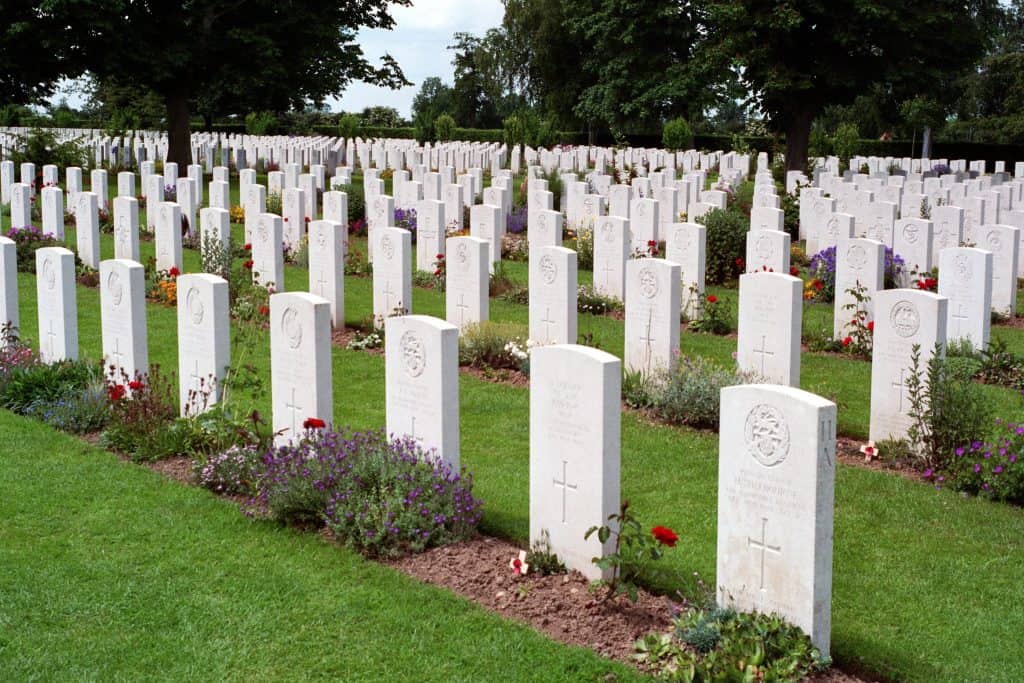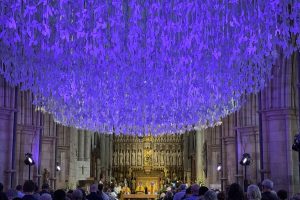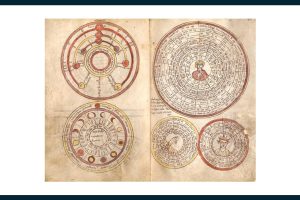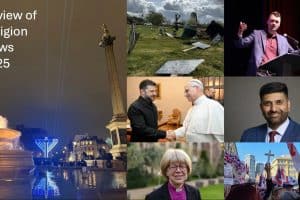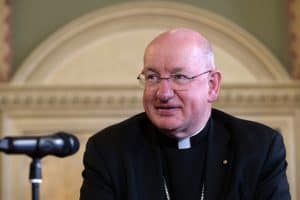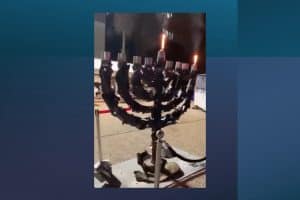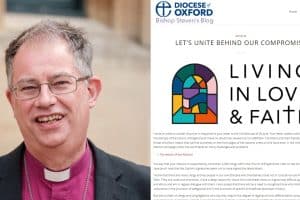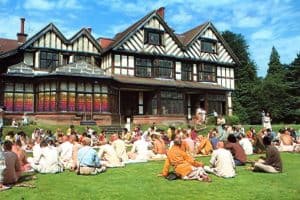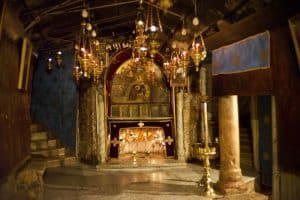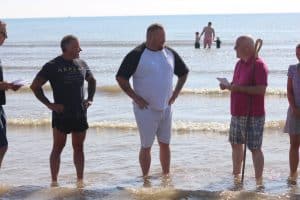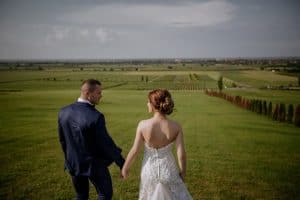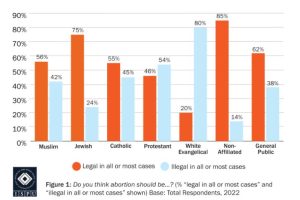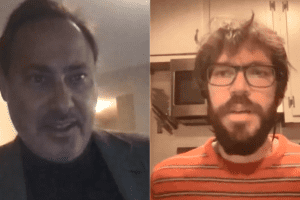By Ed Pawson
The cemeteries of the British war dead across Belgium and France are haunting places. Row upon row of headstones mark the resting places of young men who fought in the both world wars.
At the Bayeux War Cemetery, the second-largest of the Commonwealth war cemeteries in France, more than 4,600 are buried, mostly killed during Operation Overlord, the venture that began with the D-Day landings, on 6 June 1944.
The 80th anniversary of D-Day in Normandy, which led to the successful liberation of Nazi-occupied Western Europe, is to be commemorated in services at the cemetery and at Bayeux Cathedral this week.
There are few people alive who fought on that day, but their families keenly observe these commemorative events, and the trauma of young lives lost resonates from that day to this, immortalised in words etched on headstones.
These are all the more moving for being uniformly plain and understated, with a carving of a regiment or a flight battalion’s badge, and the solider or airman’s dates. Lives cut down, mostly in their twenties, sometimes even younger.
The headstones are typical of the kind found in all war cemeteries managed by the Commonwealth Graves Commission. But the inscriptions added by grieving families point to a society where religious imagery and Christian scriptural references were commonly used to describe grief, pride and hope.
Most Bayeux headstones have a Christian cross, sometimes another religious symbol, denoting that the serviceman was Muslim, or Jewish, or Hindu. Some came from parts of the British Empire, later Commonwealth: from Africa, India and other parts of the globe once tinted pink on the map.
They range from the simple, with “At Rest” carved beneath the cross, to quotations from scripture and other religious sentiments.
In other words, they offer a snapshot of the beliefs and worldviews of the British, and to a lesser extent the wider Commonwealth, of the mid-20th century and indicate the extent to which beliefs have shifted in the past 80 years.
There is hope of eternal life, admiration for the sacrifices made, and of the righteousness of the cause.
Hope of eternal life
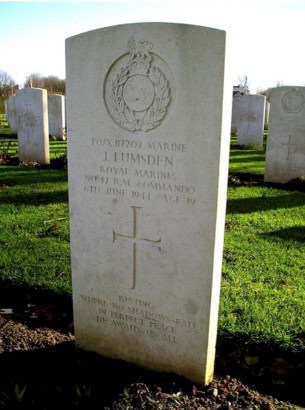
The parents and widow of Royal Marine commando John Lumsden, for example, remembered this 19-year-old who died on D-Day, with hope of eternal life: “Resting where no shadows fall, in perfect peace he awaits us all.”
The grieving parents of Sergeant Robert Elcombe, who died a day later when serving in the RAF Volunteer Reserve, had inscribed: “Love lives on through all eternity.”
These expressions of such strong certainty of the eternal life to come, often reveal a perception that it is a gift given to those who paid the ultimate price.
Reward for sacrifice
The bereft widow of another RAF volunteer reservist, Sergeant John James Glendinning, 32, had his stone inscribed “Passed to his reward”. A fellow RAF reservist, Sergeant Dermot Ezra Read Ellwood, 20, is remembered with: “In all his glorious youth he died that we might live.”
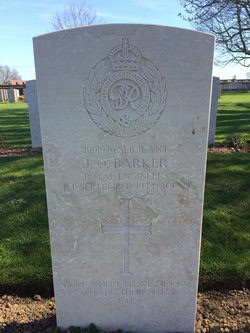
Admiration for servicemen’s duty is apparent, as is the righteousness of the cause and the conviction of their reward.
Serjeant James Orpe Barker, 28, of the Royal Engineers, was killed in 1944 working in bomb disposal. His parents remembered him as “Gone where brave men go who do their duty.” The family of JT Philpot took consolation in “A life nobly given in the service of his country.” The foster mother of Lance Serjeant Harry Cotton, 33, mother praised her boy: “He died for Britain and the nations of his race.”
Death as obedience to God
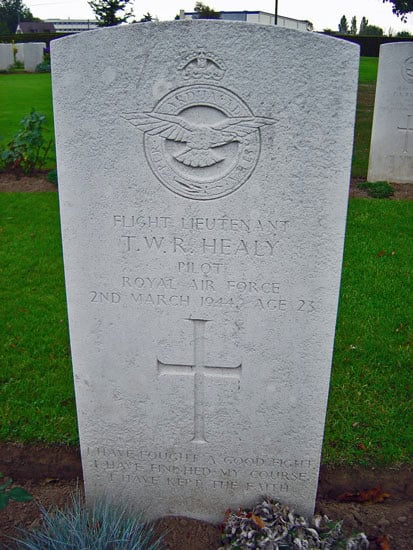
For others their sacrifice is more specifically understood as a response to God’s calling.
Private Arthur Samuel Horton, a 23-year-old serving in the Durham Light Infantry, died a week after D-Day. His parents poignantly asked on his headstone: “What greater love than his, who gave his all at God’s behest and duty’s call.”
And Flight Lieutenant Terence William Richard Healy’s parents chose for their 23-year-old son a line from St Paul: “I have fought a good fight. I have finished my course. I have kept the faith.”
Meaning found in scripture
Other headstones also indicate that the bereaved found Christian scripture an inspiration and rooted their understanding of their child’s purpose by drawing so readily on it.
The sacred text also offered those left behind the comfort of a shared belief that death is not the end. The widow of Flying Officer William Lynam, 26, killed the day after D-Day chose Psalm 23 for her tribute: “The Lord is my shepherd; I shall not want.”
Canon Maurice Elphinstone and his wife Christiana chose Corinthians 15:55: “O death where is thy sting? O grave, where is thy victory?” for their son Major George Harold Elphinstone, 34, another Royal Engineer, who died on D-Day.
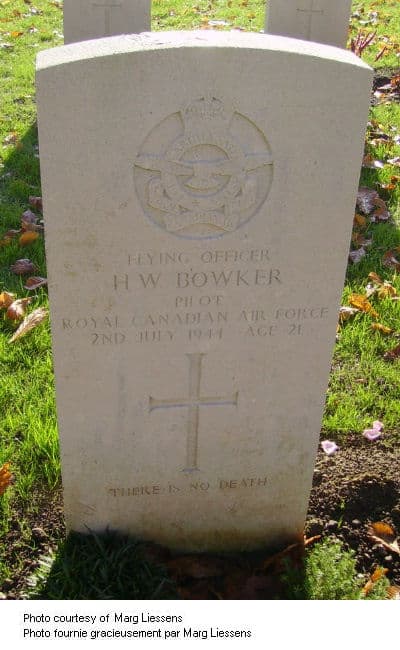
Others refused to be cowed by mortality: “There is no death”, the parents of Flying Officer Harlow Wilbur Bowker proclaimed on his stone. Their son, 21, serving in the Royal Canadian Air Force, died on 2 July 1944.
Others found consolation in the afterlife: “He is not dead. Love is eternal and he was love”, the parents of Lieutenant Robert Snaith,21, chose for the inscription on their son’s headstone. He died a week after D-Day on 13 June 1944, serving with the Queen’s Royal Regiment (West Surrey).
Another grief-stricken family, perhaps Roman Catholic, chose something hinting at a purgatorial journey towards heaven rather than immediate arrival: “Sacred heart of Jesus, have mercy on his soul. RIP”, words inscribed for Flying Officer Ronald Belmore Gower Edward Clark, 20.
Touching tributes
While many are high-minded and impersonal, expressing a reward for the intrinsic ethical goodness of a fight against a deadly foe, some express a loss that lingers and is deeply touching: “God bless Daddy” (Flying Officer William Lynam); “In loving memory of my dear son” (Lance Serjeant Harry Cotton); “Ever remembered by his loving wife Sylvia” (Sergeant JJ Glendinning).
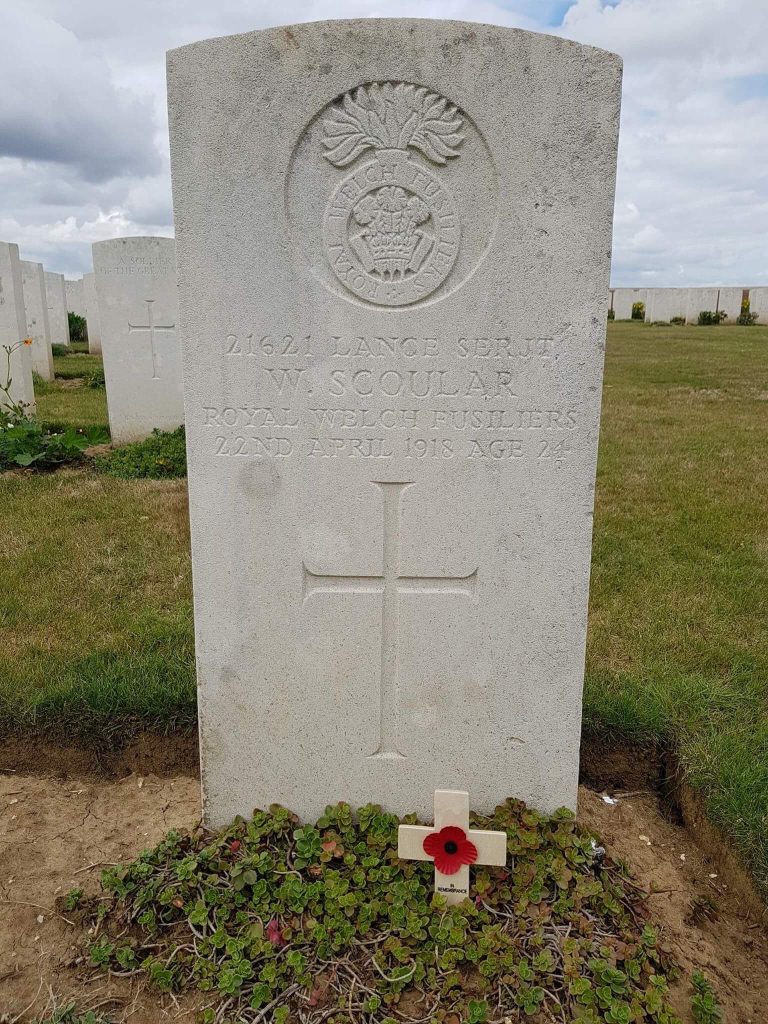
Some also emphasise the sheer bravery of their loved ones: “He passed the way of heroes. We miss him every day” the family of Sergeant Leonard Wesley Hillman wrote of their son, who served in the RAF Volunteer Reserve and died on 7 June.
The parents of Pilot Officer Frederick James Knight, 21, serving in the Royal Australian Air Force, turned to one of the most popular sentiments of the time to express their loss: “He gave his tomorrows for our todays”, and added: “Our only beloved son”.
Overall, these inscriptions paint a picture of extreme bravery, thankfulness for extraordinary sacrifice and deep sadness at the loss of loved ones.
These are all themes we can share today. What perhaps marks them out as different from the beliefs and worldviews held by Britons in our own times is the power of religious imagery and Christian scriptural references.
These tell of a society whose values were deeply rooted in their biblical literacy. While we could expect themes of courage, duty and honour to be prominent features of 21st-century epitaphs, it is unlikely that so many would reference God’s call or his presence in their remembrances today.
Ed Pawson is deputy chair of the Religious Education Council

